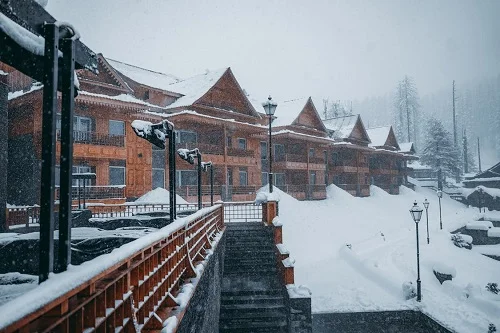Índice
A frost protected shallow foundation (FPSF) is a type of foundation system designed to withstand the effects of frost in cold climates. Unlike traditional basements, which extend below the frost line, FPSFs are constructed above the frost line and are insulated to prevent frost penetration. This article will delve into the concept of designing a frost protected foundation, exploring its benefits, and discussing various considerations for its implementation.
An FPSF is a foundation system that is insulated to prevent frost from reaching the ground beneath the slab. The rigid insulation used in FPSFs creates a thermal break, reducing heat loss from the building and preventing the formation of frost. The international residential code provides specific guidelines for the design and construction of FPSFs, considering factors such as the climate zone and the air freezing index.

Shallow foundations are categorized based on their load-bearing capacity and the type of soil they are built on. While FPSFs are a specific type of shallow foundation, it's important to understand the broader category. Common types of shallow foundations include:
FPSFs offer several advantages over traditional basements:
However, there are also some potential disadvantages to consider:
When designing an FPSF, several factors must be considered:
Frost protected shallow foundations offer a viable and energy-efficient alternative to traditional basements in cold climates. By carefully considering the factors discussed in this article, builders and homeowners can design and construct FPSFs that provide long-lasting and comfortable living spaces.
While FPSFs can offer energy efficiency benefits, their environmental impact should also be considered. The production of insulation materials and the energy required to manufacture and transport construction materials can contribute to greenhouse gas emissions. However, FPSFs can reduce energy consumption throughout the building's lifespan, potentially offsetting some of these emissions. It is important to evaluate the overall environmental impact of different foundation types, including the embodied carbon associated with their construction and the operational energy savings they provide.
The design and construction of FPSFs can vary depending on regional climate conditions and local building codes. In regions with severe winters, thicker insulation may be required to prevent frost penetration. Additionally, local soil conditions and groundwater levels can influence the design of the foundation and drainage systems. It is essential to consult with local building professionals to ensure compliance with relevant regulations and to tailor the FPSF design to the specific site conditions.
As research and technology advance, new innovations in FPSF design and construction may emerge. For example, the development of more efficient insulation materials and improved drainage systems could enhance the performance and sustainability of FPSFs. Additionally, advancements in building science and climate modeling may lead to more precise calculations of frost penetration and energy consumption, enabling more accurate and optimized FPSF designs. By staying informed about these developments, builders and homeowners can benefit from the latest advancements in frost-protected shallow foundation technology.

¡Muchas gracias!
Hemos recibido correctamente tus datos. En breve nos pondremos en contacto contigo.